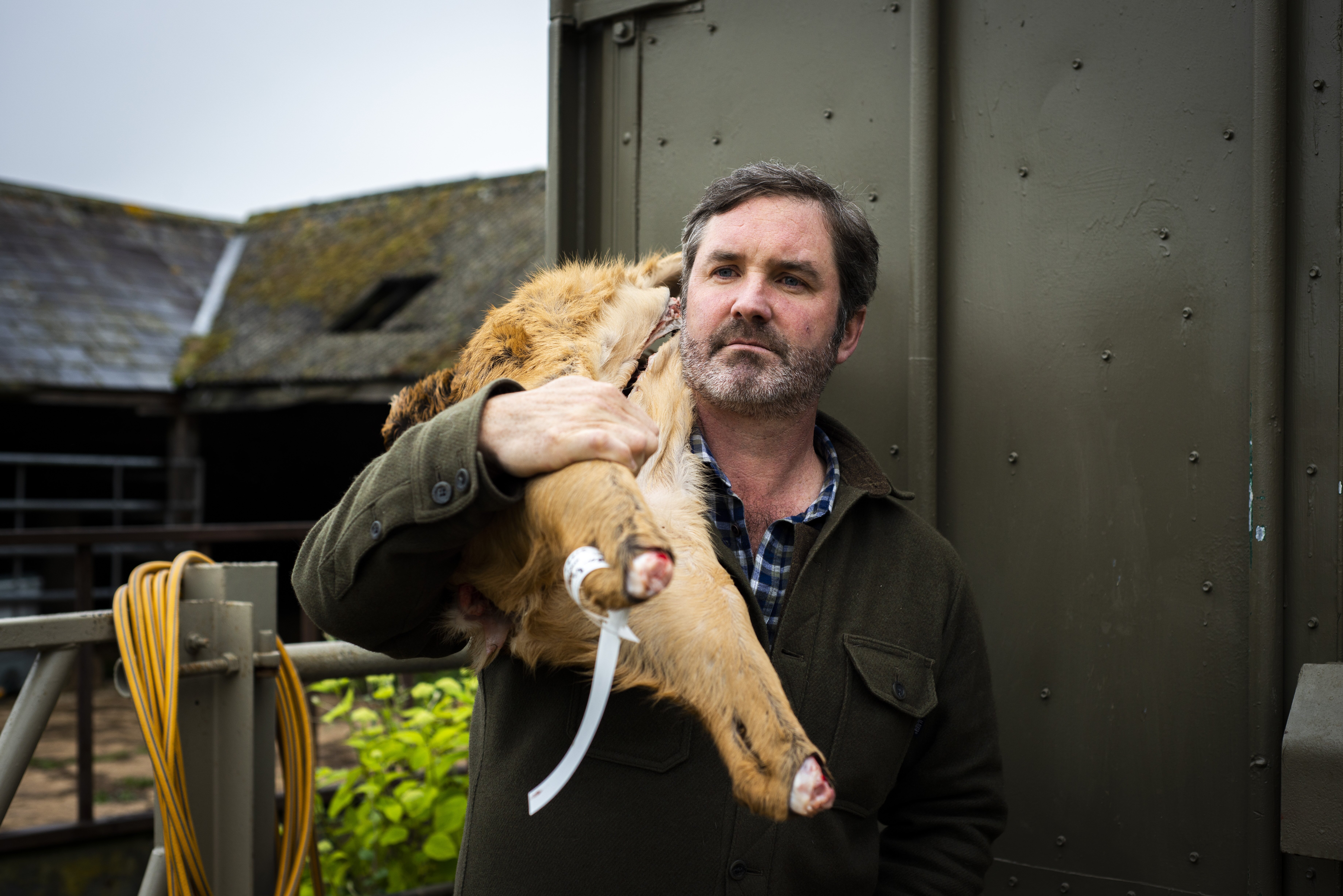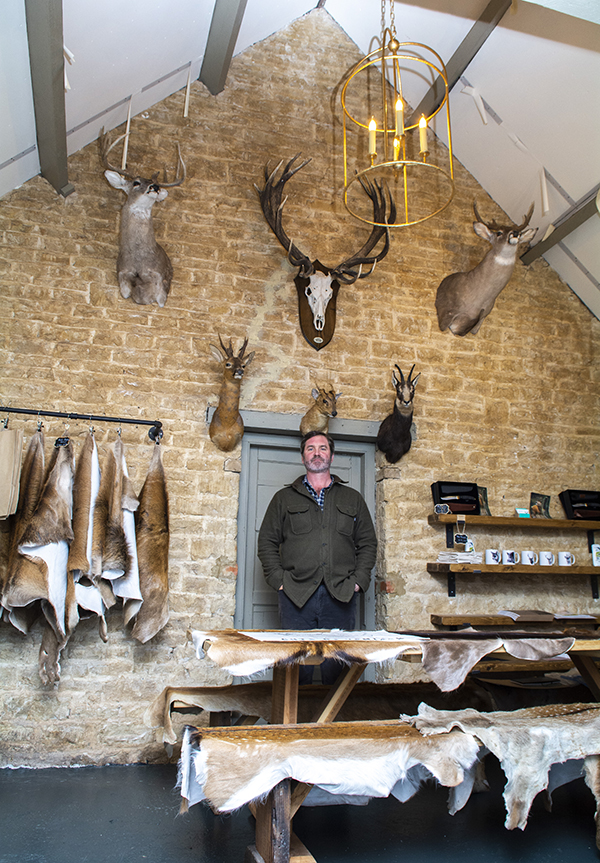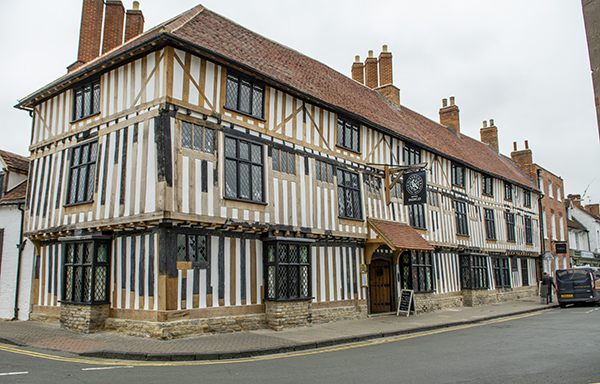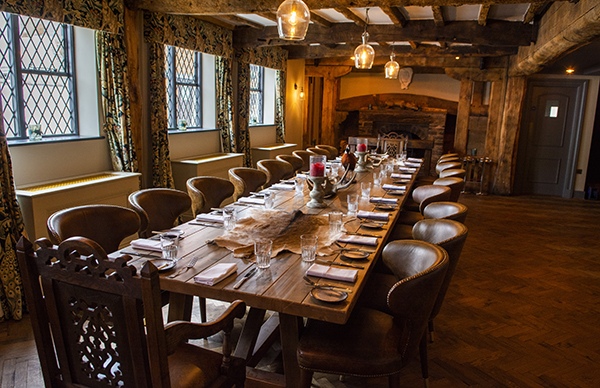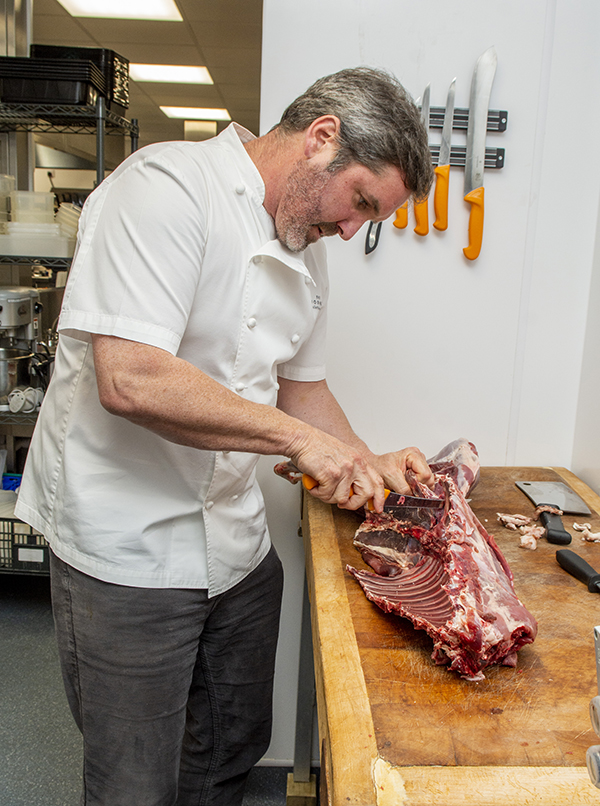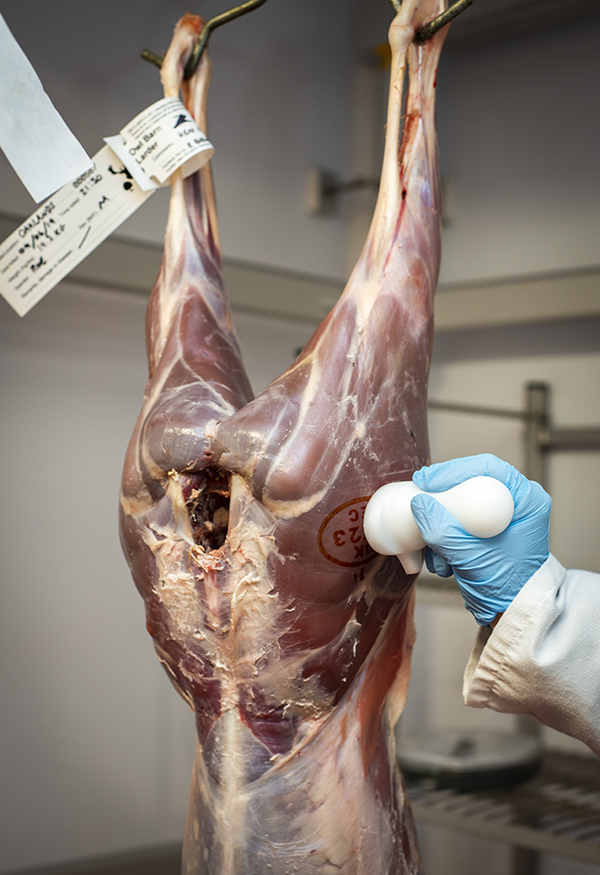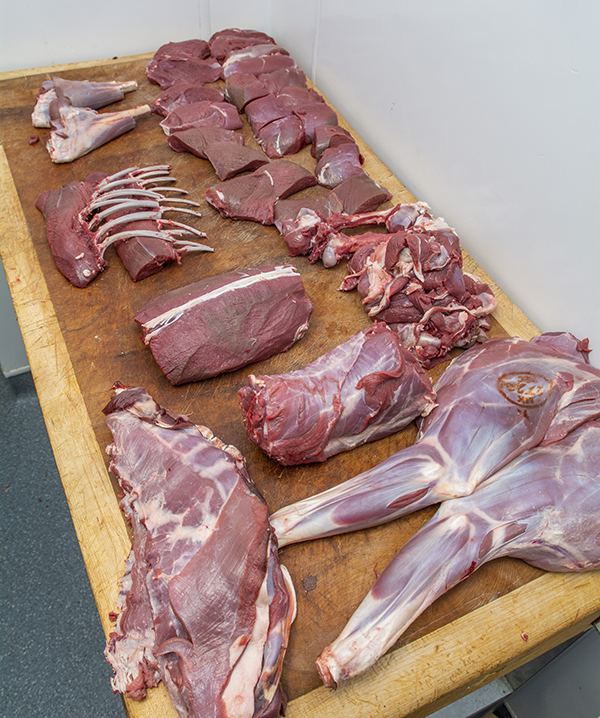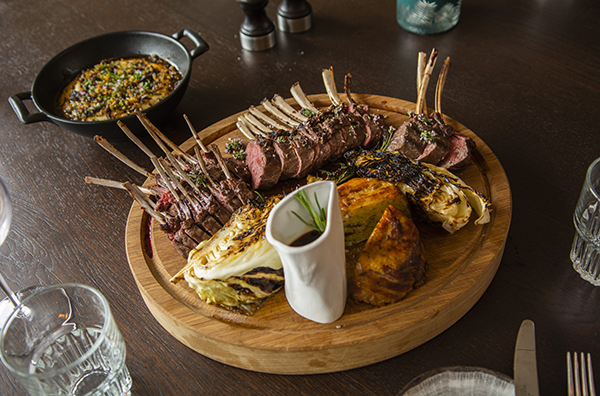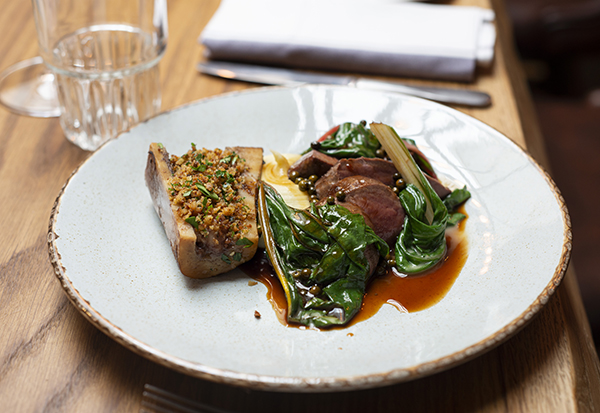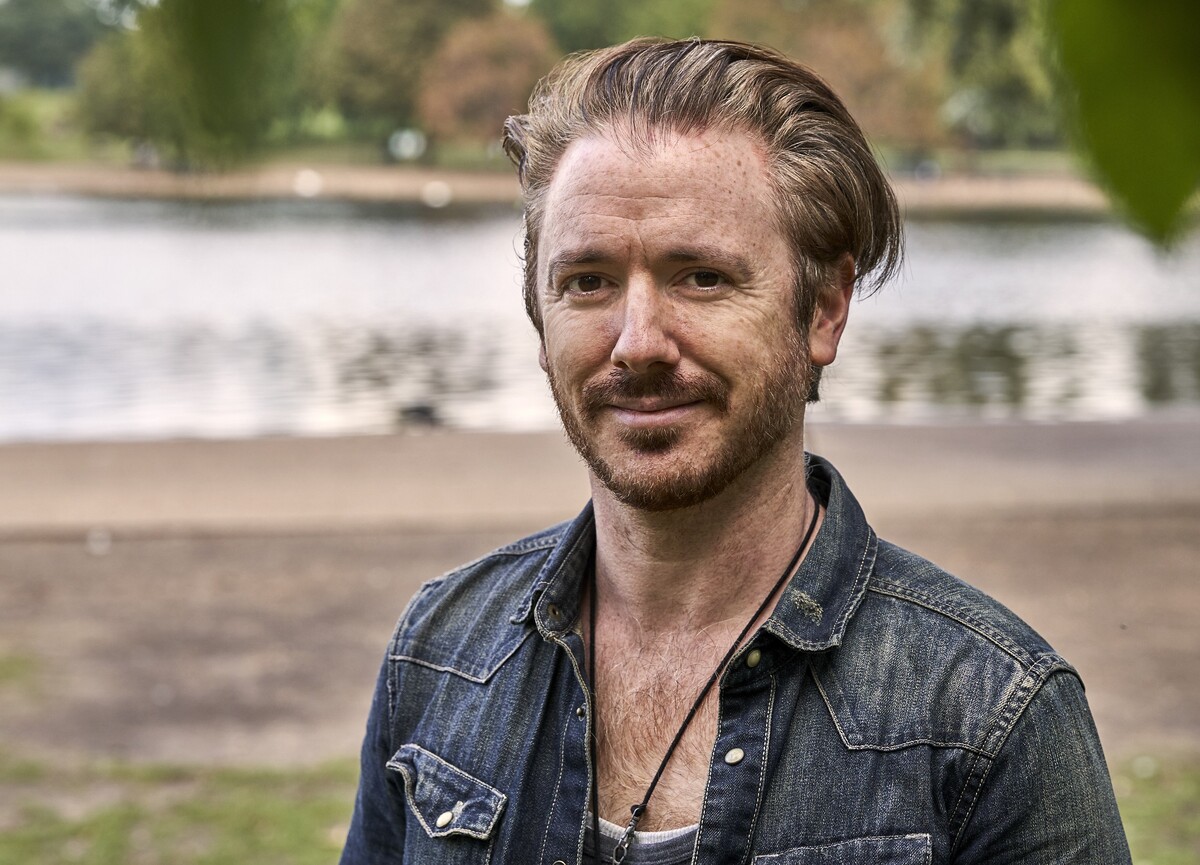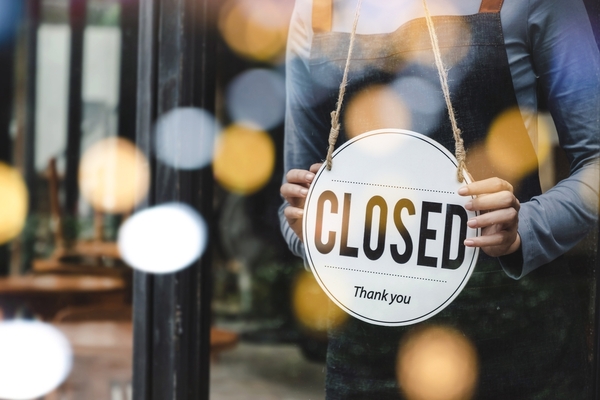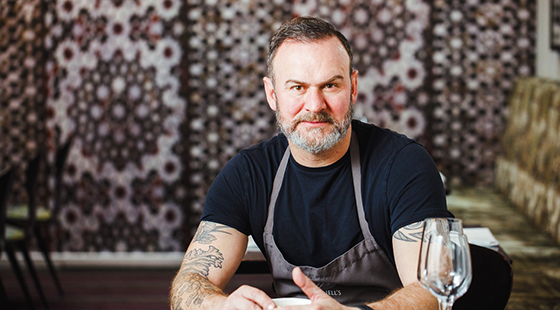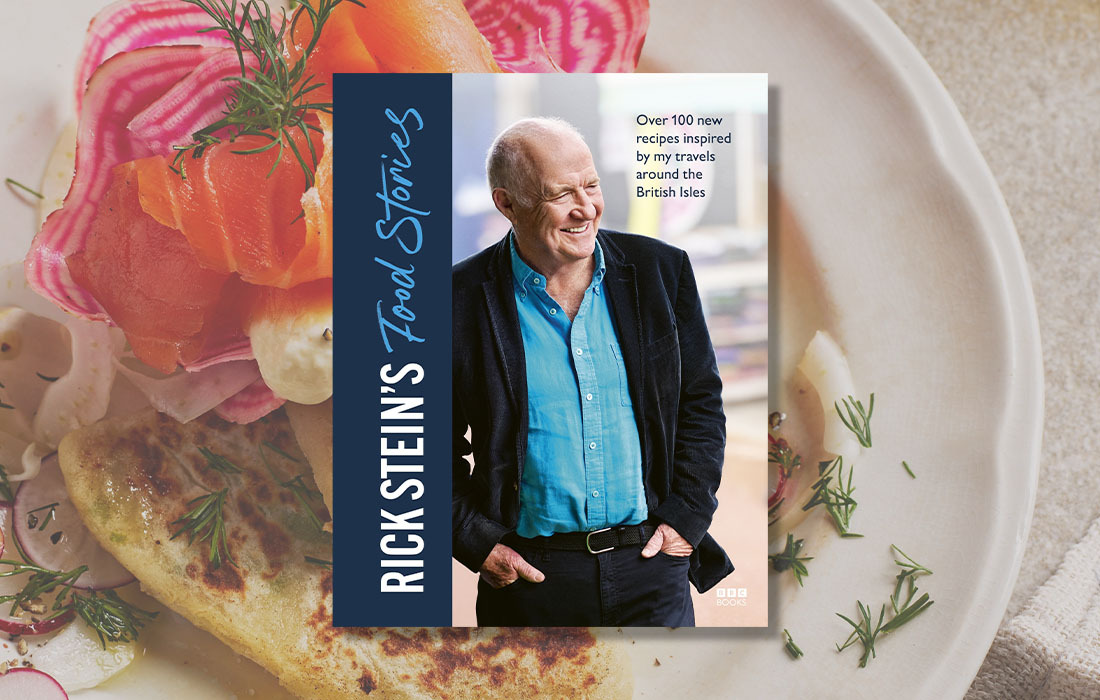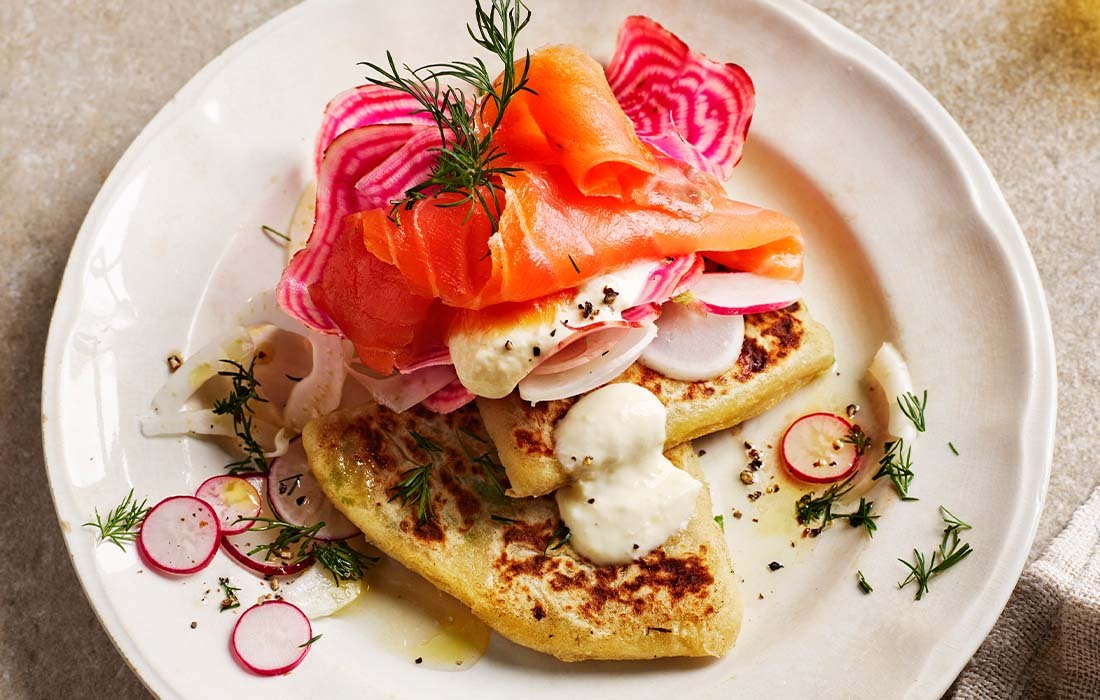Ahead of the game: Mike Robinson goes on a deer hunt
Mike Robinson, the chef-restaurateur behind the Harwood Arms and the Woodsman, has perfectly encapsulated the field to fork ethos: he stalks and shoots his deer, butchers it and serves it in his own restaurants. Vincent Wood ventures into the forest to see him at work
Provenance is important in any kitchen, but restaurateur and chef Mike Robinson never has to worry about where his venison comes from. Chances are, he shot it.
Robinson has been consistently ahead of the pack when it comes to wild food for some time. His first culinary memory is cooking a wild rabbit korma, and he spent his time at university bringing back deer, rabbit and pigeons he had shot to serve to fellow students.
Perhaps the most prominent feather in Robinson's cap is the game-heavy Harwood Arms in Fulham, the pub he co-owns with the Ledbury's Brett Graham and which has held a Michelin star for the last decade. But more recently Robinson has found a way to straddle both the kitchen and the field, hunting venison with his team at his game supplier business, Robinson Wild Foods in Duntisbourne Rouse in Cirencester, while launching new restaurant the Woodsman within Hotel Indigo in Stratford-upon-Avon, where meat from the nearby countryside will be cooked on the wood fires of the kitchen.
While Robinson has taken the outdoors inside for the new site, there's no conflict between his countryside business and his restaurant portfolio. "I can't see myself not running restaurants for the next 10 to 15 years because that's what I do," he says. "I love the symbiosis between the two businesses. And it's worked everywhere we've taken it."
Animal instinct
The journey of the deer from woodland to workbench begins in the 40,000 acres of land Robinson manages, stretching across Oxfordshire, Berkshire and Gloucestershire. Deer stalking is patient work and on the evening I venture out with head of deer management and conservation Brent Norbury-Perrott to find a suitable target, I am instructed to take slow, silent, steps behind him while he finds the right animal.
It's about as intense as a stroll through the Cotswolds can get. There may be no threat to the hunter compared to the hunted, but the heightened senses that come from scoping a deer make every sound a cause for alarm. Every wild deer sourced by the team has about five man hours behind it. Thankfully, as dusk draws in, we turn into a woodland clearing of newly planted trees and spot our target.
Before even raising his gun there are myriad snap assessments Norbury-Perrott has to make: about the age, gender, and breed of the animal, and whether he can proceed safely. He's able to tell in a split second exactly what he's looking at. He lines up the gun as the deer, a roe buck of around five years old, ducks behind the new growth. After a long silence he gives a shout, the animal looks up, and a shot rings out.
Best of breed
The UK is home to six deer species – but not all of these are truly indigenous. Red deer and roe can be traced back to before the Mesolithic period, more than 10,000 years ago. Since then, other species have been introduced by subsequent generations – fallow by the Romans, sika by the Earl of Bedford in the 11th century, and Chinese water deer and muntjac introduced in Woburn, Bedfordshire, in the past 200 years.
The rapid spread of the last of these, in under 100 years, shows the importance of land management. In the 1970s the Department for Environment, Food & Rural Affairs put muntjac numbers at around 5,000 across the UK. Four decades later, the Parliamentary Office of Science and Technology quoted a figure of more than 150,000.
There are multiple reasons the deer population has grown so much in such a short space of time – the lack of natural predators and the increasing willingness of smaller deer to stick to human-populated areas where they can't be hunted being prime examples. In particular, the 2001 foot-and-mouth disease outbreak put a halt to hunting for 12 months – enough time to allow the deer to increase their number.
There are also multiple reasons this boom is an issue. There were roughly 74,000 traffic accidents involving deer last year, while farmers bemoan damage to their crops and foresters say that deer cause damage to woodland and the flora and fauna. As we walk through the forest to find the carcass, Norbury-Perrott's gun still raised as a precaution, the need for land management comes to light. The roe was shot in a clearing of freshly planted trees, all encased in plastic cylinders. Some of the growth on the saplings has been stripped, evidenced by the species' distinctive teeth marks, and others have been knocked over and trampled. The new growth of this area and the habitat it can provide for an entire ecosystem can't exist without the management of the land's largest prey – a prey that exists without a natural predator.
"This is where the foresters have been complaining," says Norbury-Perrott, who worked in forestry before moving on to deer management. "There are some areas where the trees haven't been growing and roe are really bad for doing that. They take what's known as the lateral bud at the top of the tree, and that halts the growth."
We wade through the undergrowth to find our buck. The shot is clean and straight through the head. Hunters generally aim for the shoulder to target the heart and lungs – or 'boiler room' – lining up the crosshairs against the leg of the animal before they shoot.
Shoulder is a prised commodity in the kitchens Robinson provides. At the Harwood, the joint is braised whole and sold as a sharing dish, one of many signature offerings. Targeting the head and neck is a matter of dispute among the shooting community, but Robinson, Norbury-Perrott and those with whom they hunt are consummate professionals.
"Frontal head shots are very safe – you either kill it or you miss it, so you don't have any animal welfare issues," Robinson says. "You don't want beginners to take head shots. We probably shoot about 70% of our deer in the upper neck or head, but we don't push it. If it's a windy day, if it's over 100 yards away, we'll shoot it in the body, because we can cut the carcass up and sell it like that, rather than whole."
We now have 30 minutes to gralloch – or gut – the deer before its stomach begins to bloat and the carcass is at risk of infection. As a two-man job it's light work: Norbury-Perrott pulls out the digestive and respiratory systems in two complete parts to leave the carcass, with the only wastage being the innards, hooves and occasionally the head – although fine specimens like ours are mounted and sold for decoration for between £60 and £100. In the space of less than an hour, the deer is hooked by its hindquarters in the hanging room at Owl Barn Larder, the butchery of Robinson's Wild Foods.
Meat market
Where your deer is likely to have come from can be a tricky business to unravel. The UK has three predominant sources. Wild is just that, and it comes with the rich flavours that come from varied vegetation and the ability to run freely. Park deer live out their lives on enclosed land, often attached to stately homes. It's not an unhealthy circumstance for a deer to be raised in, but it does nothing to limit the number of wild beasts when thousands must be culled annually to support the environment.
The final alternative is farmed. Deer are raised, sometimes in continuously housed environments, while being fed a scientifically balanced diet to maximise their meat content. Often supermarkets will lean on this source of venison due to its reliability. While the flavour of the meat could never match the fully exercised muscles of a wild animal, it will be the same, week in, week out, without the risk of shot infiltrating the food chain.
This is, of course, the negative side of the growing fascination towards venison among the British but, as supermarkets rightly identify, wild deer comes with its own risks – the largest of which comes down to the supply chain. Sourcing can be a difficult process. With many gamekeepers, the hunter hands the deer to the seller, who hands it to the kitchen. While large-scale operations require extensive checks and procedures to be carried out throughout the supply chain, a loophole present in both EU and FSA rules means it is easy for smaller hunters and gamekeepers to slip through the net with less accountability.
The EU's Regulation 853/2004 means that local and marginal hunters can place goods on the market in their local area without it passing through an approved game handling establishment. This is also backed up by Food Standards Agency (FSA) rules that align to the EU legislation. However, Robinson is planning for a post-Brexit future in which he believes this clause will be scrapped and game will come under increased scrutiny, making him a rarity as he keeps a hand in the length and breadth of the food chain. Back at the Owl Barn Larder, butcher Richard Robinson slowly skins the ribcage, cutting with small, careful runs of the blade to ensure the hairs don't fall onto the meat. It's a remarkably skilful, clean and quick process and the full pelt is removed in a matter of minutes. Each pelt is salted and stored in a cold room and then shipped to Poland, where they are tanned and returned to be sold at farmers' markets.
The process, from storage to skinning to checking for disease, is approved by the FSA, with the kind of rigid protocols that could become more common after the UK leaves the EU. For now, however, operations like that at the Owl Barn Larder are a rarity, and Robinson's is one of few wild deer suppliers to carry an FSA stamp on their meat.
"As far as I know, there's no other FSA-approved company like us, where all the product is harvested by ourselves," Robinson says. "We don't buy in and that means we can guarantee quality, ethics and the wildlife management element, which, for me, is so important."
From there the carcass is labelled, bagged and sold on. If you order one of Robinson's deer, there's a high chance the person who shot it will also come to your door to hand it over – and will be able to describe exactly how it got there. Every single specimen is tagged and listed on a computer system, with details on its weight and breed, down to its GPS location and the exact time of day it was shot. Through this, and the FSA accreditation, Robinson is able to offer a complete accountability that is not readily available from other game suppliers.
Butcher boy
Venison has boomed in popularity, with sales growing year-on-year over the past decade. In 2018 sales grew by 35% after several years of steady growth, and market research firm Mintel expects growth to continue. Multiple elements make venison an attractive choice – not just its sustainability. Robinson describes it "a worthy meat" that is lean, healthy and – with prices rising on many other products – a remarkably cheap substitute to proteins like beef.
"You've got to think about it as a whole carcass," Robinson explains, ahead of portioning up our roe buck for the Woodsman. "If you bought a saddle of venison on the bone, you would pay £18 to £20 a kilo for it. Same as côte de boeuf. Buy it boned and its £24 a kilo. You buy a saddle of fallow deer that weighs 3kg, that will be at least £50. If you just took the meat from that, it would cost you £8 per portion.
"But, if you buy a whole, 30kg carcass from me at £7.50 a kilo, that will cost you £200. From that you will get 50 prime portions and 15 non-prime portions to make burgers or ragù with. At London prices you're talking £1,800 from a fallow deer carcass that cost you £200. Your average per-portion cost is less than £3 – it's a no-brainer."
To portion the deer, Robinson starts with the shoulder – a cut that, once braised, glazed and wrapped in bacon, he sells 40 of a week. He moves on to the neck, which he also braises in the restaurant. Next, he checks the lymph glands to see that they're grey and watery – a test to check for any disease in the meat. The ribs are then sawed through and the saddle is cut into T-bones for sharing dishes. The most impressive yield from the carcass is the pavé, a steak-like cut which is taken from the haunch along with the shank, allowing for 11 perfectly weighed portions – 22 plates from the two hind legs of the deer alone.
"It's ethically correct to use the whole animal, but everything about it is good," says Robinson. "I remember supplying a chef in a posh London hotel who told me 'I use the saddles in the restaurant – everything else I give to staff. The haunch just isn't good enough'. Well, it's good enough for the Ledbury, and the pavé is our signature dish – it's stunning. We just stopped supplying that chef. He didn't care about the animal – he cared about using the prime, centre-cut fillet."
And so our deer lands on the plate – the pavé with smoked bone marrow butter, pomme purée and Swiss chard, the best end served on the bone with equivalent cuts from the fallow and muntjac alongside, and a host of accompaniments. The roe is more mellow than the heady, iron-rich fallow, more flavourful than the smaller muntjac, but each has their own merits. Throughout the season, deer of different breeds offer an evolving taste profile, size and shape that requires an individual approach and treatment from the chef. As the demand picks up from consumers for a meat that's ethically sound, sustainably sourced and comfortably affordable, kitchens will no doubt continue to look to the wild for the answer – and Robinson will continue to reap the spoils of the countryside.
Robinson's businesses
The Harwood Arms
Walham Grove, Fulham, London SW6 1QP
Head chef Sally Abé
Co-founders Mike Robinson and Brett Graham
The Woodsman
4 Chapel St, Stratford-upon-Avon CV37 6HA
Head chef Jon Coates
The first independent restaurant to operate on a Hotel Indigo site, Robinson combines his passion for game with the beauty of Stratford, incorporating Shakespearean wood panelling and a labyrinth of rooms for feasting and relaxing
The Elder
South Parade, Bath BA2 4AB
Head chef Gavin Edney
This is Robinson's second site based in a Hotel Indigo, launching as a distinct, individual site with a wild food focus
Robinson's Wild Foods
07775 426566
robinsonwildfoods.com
Supplying premium ethical, sustainable wild venison to some of the UK's top kitchens



